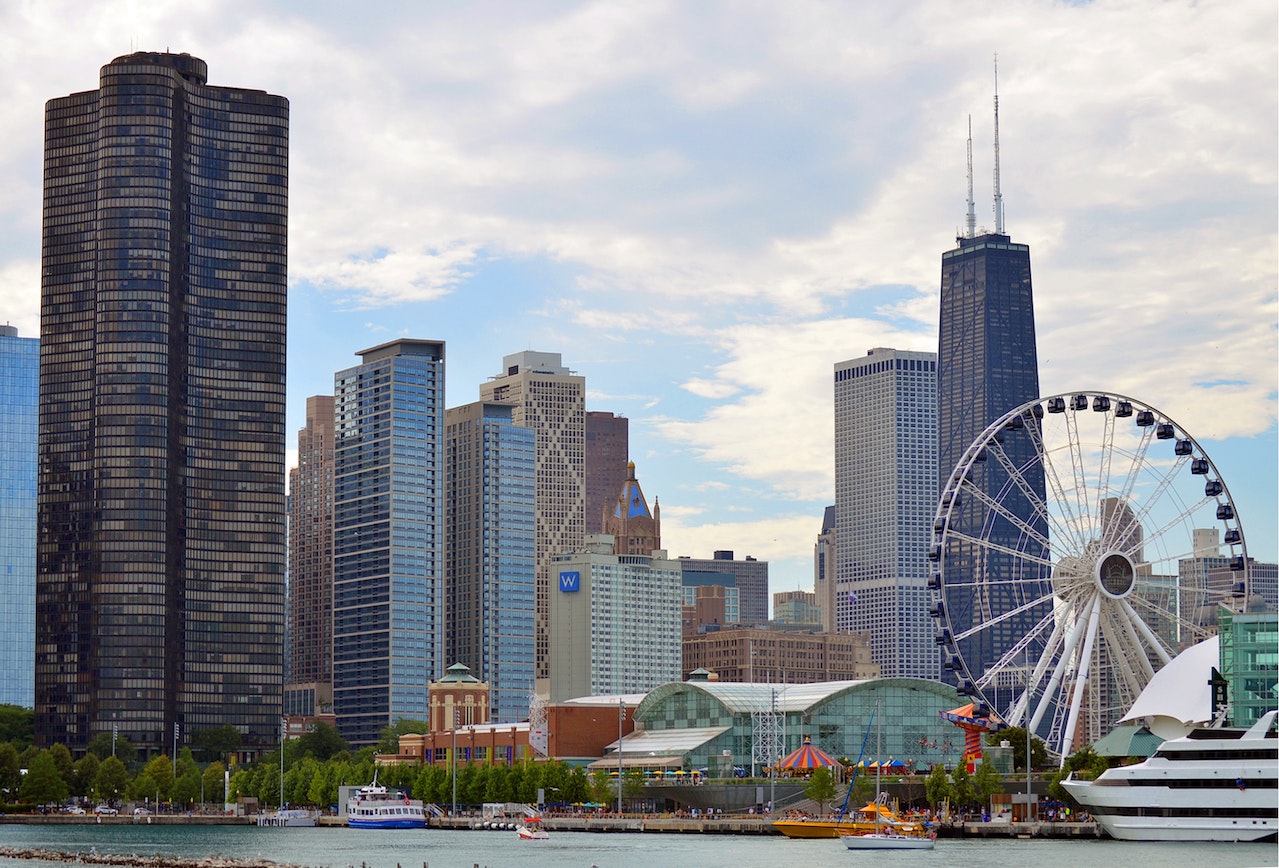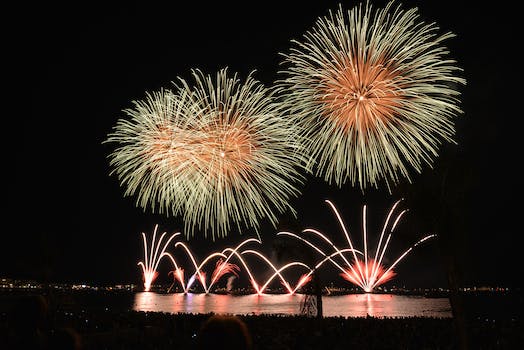The Chicago Teachers Strike
In September 2012, the city of Chicago was rocked by a major event that would have far-reaching consequences for the city’s education system. The Chicago Teachers Strike, which lasted for seven days, was a major protest by the city’s teachers against proposed changes to their working conditions and pay.
The strike began on September 10th, when the Chicago Teachers Union (CTU) announced that its members would be walking off the job in protest of proposed changes to their contracts. The main issue at stake was the proposed introduction of a new teacher evaluation system, which the CTU argued was unfair and would lead to job losses for many of its members.
The strike quickly gained national attention, with many people across the country expressing support for the teachers’ cause. However, it also caused major disruption to the city’s education system, with over 350,000 students left without classes for the duration of the strike.
Despite the disruption, the CTU remained resolute in its demands, and negotiations between the union and the city’s authorities continued throughout the week. Finally, on September 18th, an agreement was reached, and the strike was called off.
The agreement that was reached between the CTU and the city’s authorities was a significant victory for the teachers. The proposed evaluation system was revised to take into account a wider range of factors, and the union was able to secure a pay increase for its members.
However, the strike also had some negative consequences. Many parents and students were left frustrated by the disruption to their education, and some argued that the strike had been unnecessary and had achieved little.
Despite these criticisms, the Chicago Teachers Strike remains an important moment in the city’s history. It highlighted the ongoing tensions between teachers and education authorities across the country, and demonstrated the power of collective action in achieving change.
In the years since the strike, the CTU has continued to be a vocal advocate for teachers’ rights and has been involved in a number of other high-profile protests and strikes. The legacy of the 2012 strike continues to be felt across the city’s education system, and it remains an important reminder of the ongoing struggle for fair pay and working conditions for teachers across the country.
Overall, the Chicago Teachers Strike of September 2012 was a significant event in the city’s history, and one that had far-reaching consequences for the education system. While it caused disruption and frustration for many, it also demonstrated the power of collective action in achieving change, and remains an important moment in the ongoing struggle for teachers’ rights.
NATO Summit Protests
In September 2012, Chicago was the center of attention as it hosted the NATO Summit. The event brought together leaders from around the world to discuss global security issues. However, the summit was also met with protests from various groups who opposed NATO’s policies and actions.
The protests began several days before the summit, with activists setting up camps in public parks and organizing marches and rallies. The protesters came from a diverse range of backgrounds, including anti-war groups, labor unions, and Occupy Wall Street activists.
The police presence in the city was heightened in anticipation of the protests, with thousands of officers deployed to maintain order. The city also implemented a number of security measures, including road closures and the installation of security fences around the summit venue.
Despite these measures, the protests were largely peaceful, with only a few isolated incidents of violence. However, tensions between the police and protesters were high, with both sides accusing the other of provocation.
One of the largest protests took place on May 20, the first day of the summit. Tens of thousands of people marched through the streets of Chicago, chanting slogans and carrying signs. The protest was largely peaceful, but there were some clashes between police and protesters.
The following day, a smaller group of protesters attempted to march to the summit venue, but were stopped by police. The police used tear gas and batons to disperse the crowd, leading to several injuries and arrests.
Despite these incidents, the protests did not disrupt the summit itself, which proceeded as planned. The leaders in attendance discussed a range of issues, including the war in Afghanistan, nuclear disarmament, and the ongoing crisis in Syria.
The protests in Chicago were part of a larger global movement against NATO and its policies. Many activists believe that NATO is a tool of Western imperialism and that its actions have led to increased militarization and conflict around the world.
The protests also highlighted the growing divide between the political elite and ordinary citizens. Many of the protesters were frustrated with the lack of progress on issues such as income inequality and climate change, and saw the summit as an opportunity to voice their concerns.
In the years since the summit, the issues raised by the protesters have only become more pressing. The war in Afghanistan continues, and the crisis in Syria has escalated into a full-blown civil war. Income inequality and climate change remain major challenges for governments around the world.
The protests in Chicago may have been a momentary blip on the radar of global politics, but they served as a reminder that there are many voices that are not being heard. As the world continues to grapple with complex and pressing issues, it is important to remember that there are people who are willing to speak out and demand change.
Chicago Bears Season Opener
In September 2012, the city of Chicago was buzzing with excitement as the Chicago Bears prepared for their season opener. Fans eagerly awaited the start of the football season, hoping that their beloved team would make it to the playoffs and possibly even the Super Bowl.
The Bears’ season opener was scheduled for September 9th, and the team was set to face off against the Indianapolis Colts. The game was highly anticipated, as it marked the debut of the Colts’ new quarterback, Andrew Luck, who had been drafted first overall in the 2012 NFL Draft.
As the day of the game approached, fans flooded the streets of Chicago, donning their orange and blue jerseys and waving their Bears flags. The atmosphere was electric, with everyone eagerly anticipating the start of the game.
When the game finally began, the Bears got off to a strong start, with quarterback Jay Cutler leading the team down the field for an early touchdown. However, the Colts quickly responded, with Luck throwing a touchdown pass of his own to tie the game.
The game remained close throughout, with both teams trading blows and neither able to pull away. In the end, it was the Bears who emerged victorious, thanks in large part to a strong defensive effort that included two interceptions and a fumble recovery.
The final score was 41-21 in favor of the Bears, much to the delight of the home crowd. Fans poured out of Soldier Field, celebrating the team’s victory and looking forward to what promised to be an exciting season.
Despite the win, however, there were some concerns about the Bears’ performance. Cutler had thrown two interceptions, and the team had struggled at times to move the ball on offense. There were also questions about the defense, which had given up several big plays to the Colts.
Still, the Bears’ victory was a promising start to the season, and fans were hopeful that the team would continue to improve as the year went on. The next few weeks would see the Bears face off against tough opponents like the Green Bay Packers and the Dallas Cowboys, providing a true test of the team’s abilities.
Looking back on that September day in 2012, it’s clear that the Bears’ season opener was a memorable moment for fans of the team. It marked the beginning of what would be a rollercoaster season, with plenty of ups and downs along the way.
Ultimately, the Bears would finish the season with a record of 10-6, narrowly missing out on a playoff spot. While the season may not have ended the way fans had hoped, the memories of that September day in Chicago will always be cherished by those who were lucky enough to be there.
Chicago International Film Festival
In September 2012, the city of Chicago was buzzing with excitement as the Chicago International Film Festival was set to take place. This annual event, which has been running since 1964, is one of the most prestigious film festivals in the world, attracting filmmakers, actors, and film enthusiasts from all over the globe.
The festival kicked off on October 11th with a red carpet event at the Harris Theater in Millennium Park. The opening night film was the highly anticipated political thriller, “Argo,” directed by Ben Affleck. The film, which tells the story of a CIA agent who goes undercover to rescue American hostages in Iran, received rave reviews from both critics and audiences alike.
Over the course of the next two weeks, the festival showcased over 150 films from around the world, including feature films, documentaries, and short films. Some of the highlights included “The Sessions,” a touching drama about a man with polio who hires a sex surrogate, and “The Sapphires,” a musical comedy about an Aboriginal girl group in the 1960s.
One of the most talked-about films of the festival was “Cloud Atlas,” a sprawling epic that spans multiple time periods and features an all-star cast including Tom Hanks, Halle Berry, and Hugh Grant. The film, which was directed by the Wachowski siblings and Tom Tykwer, divided audiences with its ambitious storytelling and unconventional structure.
In addition to the film screenings, the festival also featured a number of special events and panels. One of the most popular events was the “Industry Days” program, which brought together filmmakers, producers, and industry professionals for a series of workshops and discussions on topics such as financing, distribution, and marketing.
Another highlight of the festival was the presentation of the Career Achievement Award to actor Dustin Hoffman. Hoffman, who has appeared in over 80 films throughout his career, was honored for his contributions to the film industry and his iconic performances in films such as “The Graduate” and “Rain Man.”
As the festival drew to a close on October 25th, the closing night film was “Flight,” directed by Robert Zemeckis and starring Denzel Washington. The film, which tells the story of a pilot who saves a plane from crashing but is later found to have been under the influence of alcohol, was a fitting end to a festival that had showcased some of the best films of the year.
Overall, the 2012 Chicago International Film Festival was a huge success, attracting thousands of film lovers to the city and showcasing some of the most exciting and innovative films from around the world. With its rich history and commitment to showcasing diverse and thought-provoking cinema, the festival is sure to continue to be a highlight of the Chicago cultural calendar for years to come.
Chicago Marathon
In September 2012, Chicago was abuzz with excitement as the city prepared to host its annual marathon. The Chicago Marathon is one of the most prestigious marathons in the world, attracting thousands of runners from all over the globe. The event is known for its fast and flat course, which winds through the city’s streets and offers stunning views of the city’s skyline.
The 2012 Chicago Marathon was no exception, with over 45,000 runners taking part in the race. The event kicked off early in the morning, with runners lining up at the starting line in Grant Park. The atmosphere was electric as the runners prepared to embark on their 26.2-mile journey through the city.
As the race got underway, it quickly became clear that the competition would be fierce. The top runners in the world had come to Chicago to compete, and they were determined to win. The men’s race was particularly exciting, with a tight pack of runners jostling for position at the front of the pack.
In the end, it was Tsegaye Kebede of Ethiopia who emerged victorious, crossing the finish line in a time of 2 hours, 4 minutes, and 38 seconds. Kebede’s win was particularly impressive, as he had battled through a leg injury in the weeks leading up to the race. He credited his victory to his determination and the support of the crowd.
The women’s race was also fiercely contested, with Atsede Baysa of Ethiopia ultimately taking the top spot. Baysa finished the race in a time of 2 hours, 22 minutes, and 3 seconds, beating out her closest competitor by over a minute. Baysa’s win was particularly impressive, as she had never won a major marathon before.
As the runners crossed the finish line, the atmosphere in Grant Park was electric. The crowd cheered and applauded as each runner completed their journey, celebrating their incredible achievements. For many of the runners, completing the Chicago Marathon was a lifelong dream, and they had trained for months or even years to prepare for the race.
But the 2012 Chicago Marathon was not without its challenges. The race was held just a few weeks after the attacks on the US embassy in Libya, and security was tight throughout the event. Police and security personnel were stationed throughout the course, and runners were subject to thorough bag checks and security screenings before they were allowed to enter the starting area.
Despite these challenges, the 2012 Chicago Marathon was a resounding success. The event showcased the best of what Chicago has to offer, from its stunning skyline to its vibrant and supportive community. It also demonstrated the incredible resilience and determination of the human spirit, as thousands of runners pushed themselves to their limits and achieved their goals.
In the years since the 2012 Chicago Marathon, the event has continued to grow and evolve. Today, it remains one of the most prestigious marathons in the world, attracting runners from all over the globe. And while the world may have changed since that fateful day in September 2012, the spirit of the Chicago Marathon remains as strong as ever.
Conclusion
In September 2012, Chicago experienced a spike in violent crime, particularly in the form of shootings. The city recorded 56 homicides in the month, making it the deadliest September in over a decade. The increase in violence was attributed to gang activity and the availability of illegal firearms. The Chicago Police Department implemented various measures to combat the violence, including increased patrols and the deployment of specialized units to high-crime areas. Despite these efforts, the city continued to struggle with high levels of violent crime in the following years.
0




